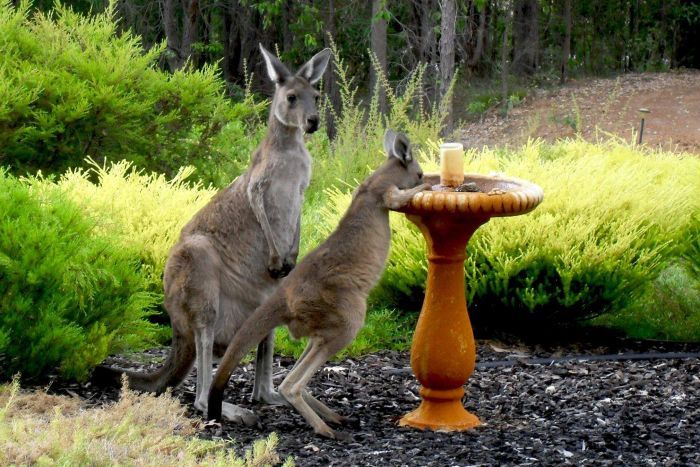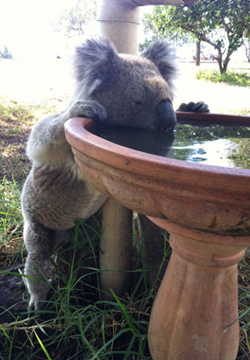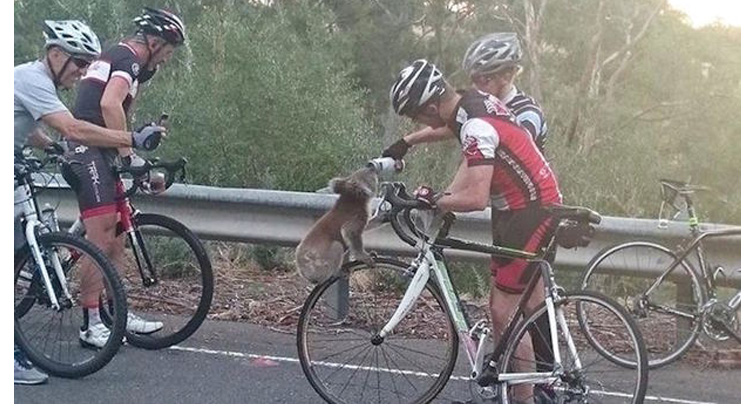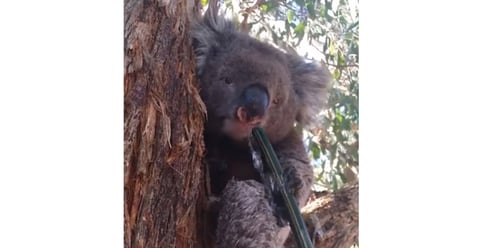Water for wildlife
While we may think there isn't alot we can do to help, don't underestimate just how many small mammals, insects, birds, frogs and reptiles can benefit from something as simple as fresh water in even a small suburban garden.
For them, access to water on scorching summer days and during drought can make the difference between life and death. During bushfires wildlife are stressed and often desperate for water.
Leave shallow bowls of water out in the shade
Ground level is great for reptiles and very small animals, but putting water in high postions is preferable for birds and other tree dwellers. Access to water off the ground where animals are safe from predators, domestic pets etc is important. Plastic tubs can be nailed to a fence, or water can be placed in bottles in trees, or in bowls on any type of platform.
- If you need to use buckets or large bowls, put a few rocks, a branch or large stick inside so birds or reptiles can escape if they fall in.
- If you can, check the water during the day and refresh if necessary. On very hot days water will evaporate, or get too hot for animals to drink.
Not all animals are like koalas!
Remember that just because you don't see them drinking doesn't mean they're not. They'll be after that water when they feel safe and that will most likely be when you're not around. You are making a big difference!
Koalas are one animal that are known to approach humans for water when they really need it
img src: Earthtripper
Helping heat stressed wildlife
Heat stressed animals might be unsteady, lethargic, and behaving strangely. Tree dwellers might be on the ground for example, or nocturnal animals out and visibile during the day. If you see an animal that is struggling, call your local wildlife rescue and follow their advice. See advice here about how to manage animals that are on the road.
If you've found a distressed animal and need to restrain or transport it, make sure it is safe to do so before you attempt anything. Don't approach or try to handle snakes, large kangaroos, hawks, eagles, flying foxes, or goannas. If the animal is safe to handle, wrap it loosely in a towel or cloth and place it in a cardboard box in a cool, dark and quiet spot. You can also provide water in small low dish. Leave the animal alone while it rests and recovers until you can get advice or help from a vet or wildlife carer.
Don't try to feed or handle the animal more than necessary, and don't be tempted to cool it down with wet towels or water baths as it can prove fatal.
For Assistance call Wires Australia - Wildlife Rescue 1300 094 737
Kangaroo & Joey drinking from a birdbath

Wildlife will try and get water from wherever they can. ABC Open contributor Vince Evans
Fairy wrens and finches cool down in a bird bath.
.jpg)
Photo: Pollinator Link/Sandra Tuszynska



Nothing better than seeing your drinking station being put to good use!


